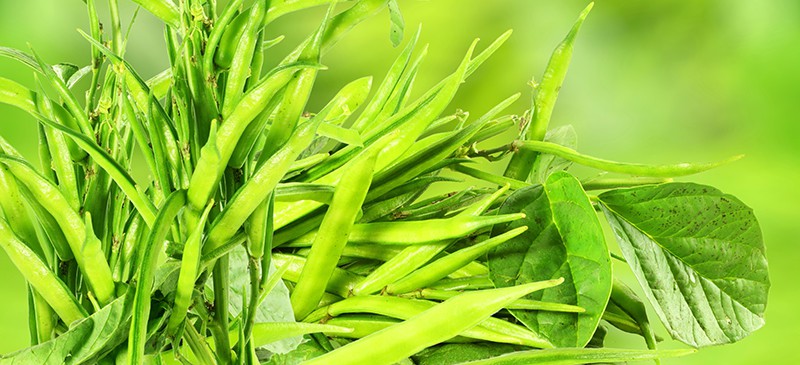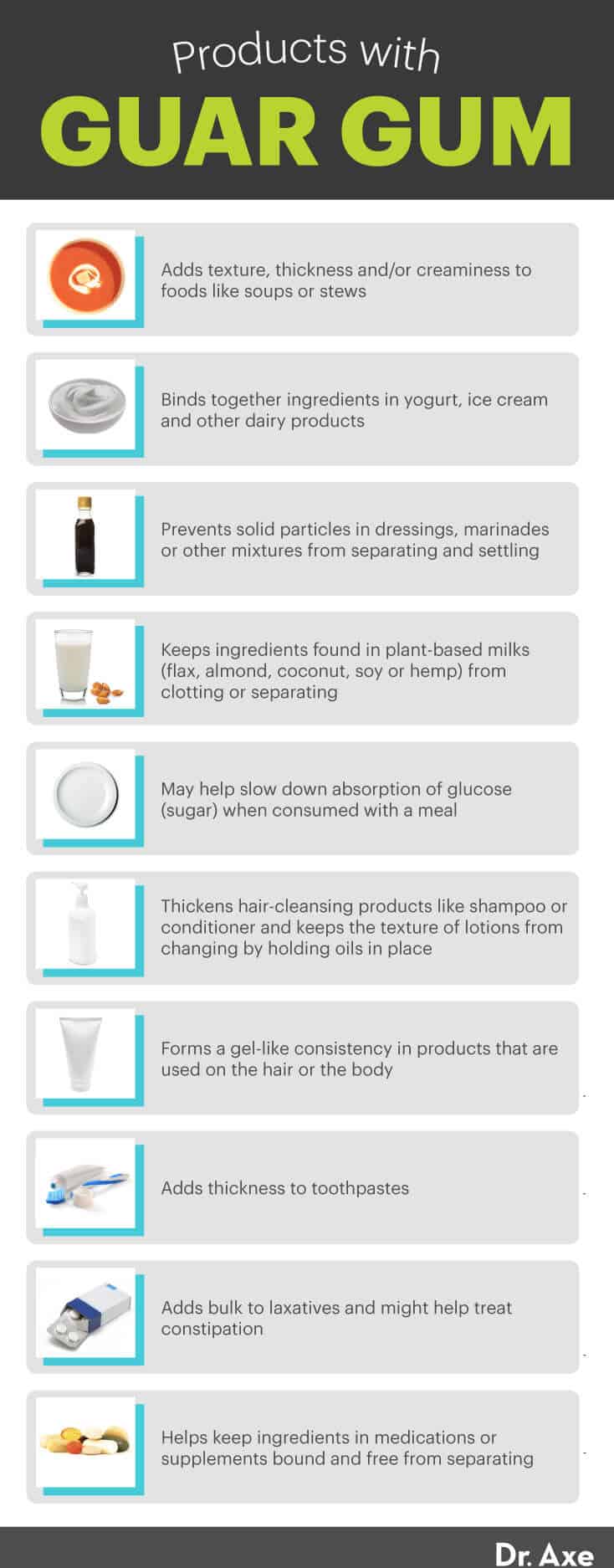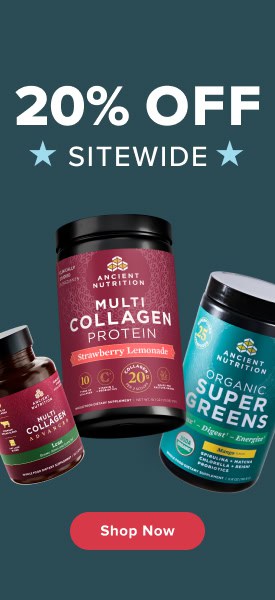This Dr. Axe content is medically reviewed or fact checked to ensure factually accurate information.
With strict editorial sourcing guidelines, we only link to academic research institutions, reputable media sites and, when research is available, medically peer-reviewed studies. Note that the numbers in parentheses (1, 2, etc.) are clickable links to these studies.
The information in our articles is NOT intended to replace a one-on-one relationship with a qualified health care professional and is not intended as medical advice.
This article is based on scientific evidence, written by experts and fact checked by our trained editorial staff. Note that the numbers in parentheses (1, 2, etc.) are clickable links to medically peer-reviewed studies.
Our team includes licensed nutritionists and dietitians, certified health education specialists, as well as certified strength and conditioning specialists, personal trainers and corrective exercise specialists. Our team aims to be not only thorough with its research, but also objective and unbiased.
The information in our articles is NOT intended to replace a one-on-one relationship with a qualified health care professional and is not intended as medical advice.
Guar Gum: Is This Food Additive Harmful or Helpful?
September 6, 2024

Guar gum beans which have uses spanning several industries are grown all over the world for food, household and industrial/manufacturing applications. Today, it’s estimated that food-industry applications account for the vast majority (more than 70 percent) of the world’s supply of guar gum.
Considered to be a type of galactomannan, guar gum is produced in a similar manner to other natural seed gums that are created by milling the endosperm (seeds) of legumes or grains.
While guar gum doesn’t necessarily provide many essential nutrients, it’s low in calories and high in fiber, which may help you feel more satisfied after eating. Let’s look at its potential benefits as well as potential drawbacks.
What Is Guar Gum?
Guar gum (also sometimes called gellan gum) is a common powdered product used to stabilize, emulsify and thicken the texture of certain foods and industrial products. You’ll find guar gum in products such as bottled coconut or almond milks, yogurts, soups, fiber supplements and body lotions.
It’s created by dehusking, milling and sorting the type of legume called the guar bean. The “guar plant” used to make this product has the species name Cyamopsis tetragonolobus.
When used as a food additive, guar gum is usually found in powder form. A very little bit of guars gum goes a long way, since it has a very high water-absorbing ability and quickly increases viscosity, even in cold water. In fact, research shows the water-holding capacity and gel-forming tendencies of guar gum allow it to swell in size 10- to 20-fold.
While it has some benefits and can improve the texture of foods, on the other hand, like other emulsifiers added to many processed foods, consuming guar gum may come with potential drawbacks.
In some people it can trigger digestive issues, so it’s not something you necessarily want to purposefully consume a lot of. That being said, in moderation it seems to be a better choice than other emulsifier options.
What does guar gum do to your body?
Guar absorbs a large amount of liquid in the digestive system. This means it might be beneficial for normalizing blood sugar and cholesterol levels.
However, there’s one thing to be cautious of when it comes to consuming guar gum: Watch out for any strong weight-loss claims tied to diet products containing guar gum.
Guar is now sometimes used in meal replacement products, diet pills or other weight-loss supplements because manufacturers claim it can help curb your appetite by swelling and absorbing water in the digestive system.
Nutrition Facts
The guar plant produces beans that contain an endosperm that’s high in the type of sugar called polysaccharides, specially the polysaccharides galactomannans, mannose and galactose. Depending on its uses, once it’s formed from the endosperm of the guar bean, it may be cleaned with alcohol or another cleansing agent to prevent the growth of bacteria.
When combined with water or liquid, it thickens to form a gel-like texture, usually which can be well-maintained through moderate changes in temperature or pressure.
The powder has a white to yellowish-white color that doesn’t usually change the appearance of other ingredients in recipes. It also doesn’t have much taste or odor at all — in fact, it’s considered virtually odorless — therefore it makes a convenient addition to many types of different food products. It’s also vegan, as it comes from a plant.
And because guar gum works in the same way as more highly processed thickening or stabilizing agents, such as carrageenan, it makes a good natural alternative when preparing other DIY beauty/household recipes.
Finally, a unique attribute of guar gum is that it’s insoluble in oils, grease, hydrocarbons, ketones and esters, meaning it’s very useful for stabilizing fatty substances.

Where It’s Found
Because of guar gum’s structure it has a variety of uses and can be found in food, household or beauty products. Here’s more about how it works and where it’s found:
- Adds texture, thickness and/or creaminess to foods like soups or stews. It can be useful to use at home, but avoid processed, canned soups filled with preservatives and sodium.
- Binds together ingredients in yogurt, ice cream and other dairy products. It does this by preventing oil droplets from separating, which is why it’s often found in products containing a source of fat.
- Prevents solid particles in dressings, marinades or other mixtures from separating and settling.
- Keeps ingredients found in plant-based milks (flax, almond, coconut, soy or hemp) from clotting or separating.
- May help slow down absorption of glucose (sugar) when consumed with a meal.
- Thickens hair-cleansing products like shampoo or conditioner. Also keeps the texture of lotions from changing by holding oils in place.
- Forms a gel-like consistency in products that are used on the hair or the body.
- Adds thickness to toothpastes.
- Adds bulk to laxatives and might help treat constipation.
- Helps keep ingredients in medications or supplements bound and free from separating.
Aside from being used in foods, other important uses for guar gum globally are in the mining, textile, explosives and paper-manufacturing industries. Guar activation has been found to lead to beneficial changes in chemical properties, including decreased hydrogen bonding, increased solubility in water-alcohol mixture, and improved electrolyte compatibility.
Benefits
1. May help treat or prevent constipation
Guar is a common bulk-forming ingredient in laxative supplements/drink formulas because it helps form stool by holding water in the intestines.
This may help promote regular bowel movements and offer partial relief from symptoms related to constipation or diarrhea.
One study showed that guar gum helped reduce constipation by speeding the movement of stool through the intestines. An improvement in stool texture and frequency of bowel movements was also observed.
2. May help slow down glucose (sugar) absorption and normalize cholesterol
Some studies have found that guar gum might have benefits for prediabetics, diabetics, or those with high cholesterol levels and heart disease.
There’s evidence that points to the anti-diabetic effects of guar, suggesting it has at least mild positive effects that help a portion of patients avoid drastic spikes and dips and blood sugar. This is because guar gum is a type of soluble fiber, which can slow down sugar absorption and help stabilize blood sugar levels.
Indeed, as a type of water-soluble dietary fiber, it also works in the same way that other fibers do (like chicory root or inulin fiber). One effect of guar gum is decreasing the rate of sugar absorption within the small intestine following a meal while slowing gastric emptying.
One study of diabetics showed that guar gum helped decrease blood sugar levels and a 20 percent decrease in LDL (bad) cholesterol.
Consuming soluble fiber has been shown to help lower cholesterol levels, and guar is a convenient way to get more into your diet. Glucomannan, closely related to guar gum, appears to beneficially affect total cholesterol, LDL cholesterol, triglycerides and even body weight, according to certain studies.
3. Might help you feel full and assist in weight management
There’s evidence that the high-carbohydrate content of guar causes it to swell in the digestive tract and provide the feeling fullness. For this reason, it’s often used as a filler or to add bulk to recipes, fiber supplements or laxatives.
Some studies have found that guar products (or similar fiber products made from the guar bean) can help increase satiety, possibly lead people to eat less overall, slow the digestion of a meal, and possibly help decrease cholesterol absorption and the glycemic index of a meal. Partially hydrolyzed guar gum (PHGG) is sometimes the name used to describe guar when it’s taken as a soluble dietary fiber.
One review of three studies concluded that guar gum not only improved one’s feeling of fullness, but also helped lower the total number of calories consumed from snacking.
Another study that involved only women subjects found that consuming 15 grams of guar gum per day assisted in losing an average of 5.5 pounds more than those who used a placebo.
One reason that guar gum might help you feel full after a meal is because it increases viscosity in the gut, which causes a slower absorption rate of carbohydrates and stimulates bile production.
4. Helps form gluten-free baked goods
Guar gum is one of the most frequently used binding gums in most gluten-free recipes and baked goods. It can be used in place of wheat flour or other binding products that provide the signature bounce we look for in baked items.
It works by holding water and air in place, making gluten-free doughs less crumbly or likely to fall apart.
Considering that holding together texture is a major obstacle in gluten-free baking, guar gum is an easy way to add crispness, bounce or resilience to things like gluten-free crusts, muffins, pizza dough or bread without using high-gluten wheat products, processed additives or other grain flours.
5. Keeps ingredients (including fats/0ils) from separating
If you plan on ever trying to make probiotic-rich homemade kefir or yogurt, guar gum comes in handy for thickening and maintaining homogeneity of texture.
Same goes for homemade fruit sherbet, ice cream, almond milk or coconut milk. It’s very useful for keeping thinner ingredients (like water) combined uniformly with thicker ingredients (like coconut cream or oil).
Guar Gum vs. Xanthan Gum
Is guar gum and xanthan gum the same thing? Not exactly, but xanthan makes a good guar gum substitute.
Xanthan is produced when sugar is fermented by the bacteria Xanthomonas campestris, combined with isopropyl alcohol and then powderized. It’s then added to liquid to form gum, acting as an emulsifier.
Some find that guar works better in cold foods, such as ice cream, while xanthan is better in baked goods. Overall, guar is considered to work even better as a thickening agent in foods than similar products like xanthan, cornstarch or locust bean gum. In fact, it can hold almost eight times the amount of water that cornstarch can.
Precautions and Side Effects
In high doses, guar bulks up very quickly and can be hard to control once consumed and combined with liquid.
Most studies have found no serious side effects with guar gum doses up to 15 grams. When side effects are in evidence, they typically are mild and gut-related, such as gas, bloating, diarrhea and cramps.
In very high doses (much higher than what’s included in most products and/or supplements), it’s been associated with serious side effects, including pulmonary embolism, esophageal tear, small bowel obstruction and luminal obstruction.
Some studies have also found an allergic sensitivity to guar gum in people with soy allergies and those with very high exposure to guar beans due to working in certain industrial settings.
Uses in Recipes
If you choose to purchase and use guar gum, you’ll notice that there are now various guar powders available on the market, with most major grocery stores carrying at least one type. The higher-quality, finely powdered guar brands tend to work a bit better at swelling, absorbing water and holding together the texture of baked recipes.
Look for a fine guar gum powder (ideally that’s organic) when using it in recipes over the types that are more coarsely ground. Bob’s Red Mill guar gum is a good choice since it’s minimally processed and often used by chefs and/or bakers.
How to use it:
- Some recommend that guar gum be used in cold foods (such as ice cream or pastry fillings) more so than baked recipes because there’s potential it might not work as well as other products like xanthan gum. However, this is a matter of personal preference.
- It’s also advised to skip guar when making highly acidic recipes (like those made with lots of citrus or lemon juice) since this might cause it to lose its texture.
- Like any other food additive, it’s best to consume guar gum in small amounts. Pay attention to your individual response to consuming guar — or any other additive for that matter. If you notice signs of indigestion, always back off and try using something else.
- Look for guar products that are as pure as possible and contain as few ingredients as you can find. Rather than using guar gum in many recipes, consider adding texture and stabilization to recipes using other natural methods, like adding flaxseeds, chia seeds, pureed fruit or veggies, or pure coconut milk for silkiness and moisture.
Although guar itself might have certain benefits, it’s best to avoid it in processed foods, such as:
- Processed meats, like cold cuts, frozen burgers, breakfast sausage, etc. Guar is used to bind together ground meat and hold its texture in place during freezing, storage or shipping.
- In bottled condiments, such as salad dressings made with refined vegetable oils, high-sodium barbecue sauces or ketchups, sugary relishes and sweetened teriyaki marinades.
- In canned soups, stews, sauces or veggies.
- In dry milk, dried soups, sweetened instant oatmeal, puddings, Jello or other custard desserts, gravy, jam or jelly, canned fish in sauce, sugary syrup, and frozen food items that tend to be very high in sugar and sodium.
Here are several ways you can use guar gum in recipes at home:
- Add a small amount of guar to homemade almond milk or other milk alternatives.
- When making sauce, marinade or dressing, especially if you’re trying to keep calories and fat content low, consider adding guar to help add a creamy-like texture.
- Guar can help form a smooth texture in homemade lotion, toothpaste or conditioner. For a creamier feel, add guar gum powder to homemade shampoo made with baking soda. Use about 1/8 teaspoon of pure guar gum for the entire recipe.
- Try guar in gluten-free recipes like gluten-free pancakes, muffins, pizza crust or banana bread.
Conclusions
- Guar gum is a stabilizing, thicken food product created by dehusking, milling and sorting the type of legume called the guar bean (Cyamopsis tetragonolobus).
- Because it absorbs a high amount of water, effects of guar gum can include helping to make you feel full after eating, normalizing blood sugar levels, aiding in digestive health and improving cholesterol levels.
- Ways to use guar include adding it to gluten-free baked good, smoothies or shakes, sauces and dips, dressings or marinades, and also homemade beauty products like toothpaste, conditioner or shampoo.
- While there are some benefits associated with guar gum nutrition, in high doses it has been known to cause some issues, so always use guar in moderation.



